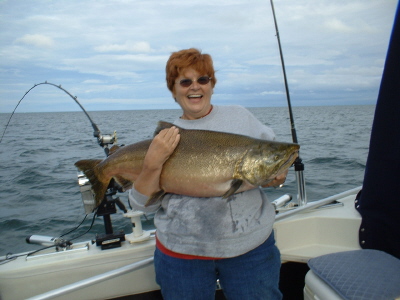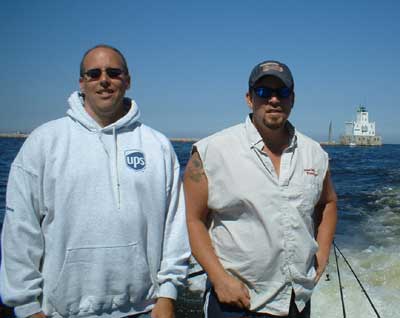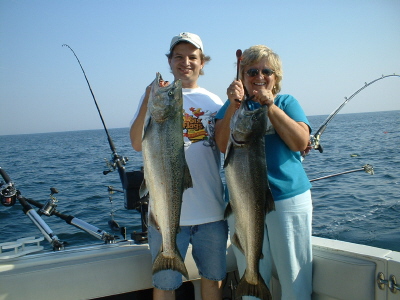PA 2010 SPRING GOBBLER SEASON SNEAKING UP ON THE CALENDARHARRISBURG – This year marks the 42nd anniversary of the Keystone State’s spring gobbler hunting season, and the Pennsylvania Game Commission is reporting turkey hunters should expect to find exciting opportunities afield as they head out for both the youth and traditional spring season openers.
The state’s one-day youth spring gobbler season is April 24; the general spring gobbler season is May 1-31. Hunters who have purchased a second spring gobbler season license may harvest up to two bearded turkeys. (See second article about availability of second spring gobbler license.)
“Wild turkeys continue to be the second most popular game species in Pennsylvania,” said Carl G. Roe, Game Commission executive director. “Spring turkey hunting has become so popular that there now are more spring turkey hunters (239,000) than fall turkey hunters (183,000), according to our annual Game-Take Survey. Also, ever since 2001, spring gobbler harvests have exceeded fall turkey harvests.”
The first spring gobbler season started on a Monday and ran only six days so biologists could get a pulse on hunter success and the season’s impact on the more than 60,000 wild turkeys inhabiting about half of Pennsylvania’s forestland at the time. It worked! More hunters were afield on the last day of the season – a Saturday – than the opener, and hunters took a total of 1,636 turkeys in the new season.
The preliminary harvest estimate for the 2009 spring gobbler season shows that hunters took 43,677 bearded birds (which included a harvest of 41,397 using the spring gobbler tag attached to all general hunting licenses, and 2,280 using the special spring gobbler license) from an estimated statewide spring population of about 345,000. (Final figures will be available in July after the results of the Game-Take Survey are compiled.) The spring wild turkey population peaked in 2001, when it numbered 410,000. So, it’s fair to say the status of wild turkeys has changed dramatically over the past 40 years.
“Pennsylvania began to establish its well-respected presence in the annals of America’s wild turkey management history back in the ‘60s through the efforts of two biologists who made their peers stop and look at what was going on here,” said Mary Jo Casalena, Game Commission wild turkey biologist. “Gerald Wunz and Arnie Hayden refined turkey trap-and-transfer techniques and multi-season frameworks to help turkeys reclaim their former range throughout the state.
“With each passing year, the turkey population grew, and ultimately compelled the agency, in 1980, to close its turkey farm, which had produced more than 200,000 birds over its half-century of operation.”
Today, Pennsylvania manages one of the most prolific wild turkey populations in America. It is an accomplishment that is directly related to both previous and ongoing management practices, the state’s outstanding tapestry of turkey-friendly habitats and the resiliency of Pennsylvania’s wild turkeys.
“The preliminary 2009 spring gobbler harvest was the fourth highest on record,” Casalena said. “It is nine percent above the previous three-year average, and three percent above the previous 10-year average, which included a period when Pennsylvania logged five consecutive harvests of more than 40,000 gobblers.”
Final spring gobbler harvests, prior to 2009’s preliminary harvest of 41,397, are: 40,522 in 2008; 37,880 in 2007; 39,297 in 2006; 32,593 in 2005; 41,017 in 2004; and 42,876 in 2003. The preliminary fall wild turkey harvest was about 23,068, which is down from the 26,500 in 2008, but is up substantially from the 21,900 in 2007, and 21,500 in 2006. Final 2009 harvest figures will be available later this summer.
In 2009, 2,280 second spring gobblers were taken by the 10,720 hunters who purchased the special spring gobbler license. That compares with 1,954 second turkeys taken by 8,795 license holders in 2008; 1,507 turkeys by 7,585 license holders in 2007, and 1,454 turkeys by 8,041 license holders in 2006.
So what can hunters expect this spring? According to Casalena, another great spring season is in store for hunters.
“The reason for the optimist outlook is due to the excellent summer reproduction two and three years ago, which has provided for a higher proportion of adult (two- and three-year-old) gobblers in the population,” Casalena said. “Reproduction last spring was below average due to the cold, wet spring, so that may impact next year’s spring harvest.
“From our four-year gobbler study that just ended, we learned that hunters select the older ‘long-beards’ over juveniles, or ‘jakes.’ These adult birds gobble the most and come in readily to hunters’ calls, so they are more prone to being harvested. The older four- and five-year-old age classes usually are much more wary, and there just aren’t many in the population. So, because of the above-average number of two- and three-year-olds in this year’s flocks, I predict an excellent spring turkey season for Pennsylvania’s gobbler hunters.”
Casalena encourages spring gobbler hunters to spend time scouting, which always plays an important role in hunter success.
“Scouting this spring can improve hunters’ chances by lining up multiple locations for the spring season,” Casalena said. “Prior to the season, however, hunters should consider not using turkey calls to locate gobblers, because it can educate birds and cause them to be less inclined to respond to the early-morning calls of in-season hunters.
“If you’re trying to locate a gobbler, it’s best to head out at first light to listen for calls. Now is a great time! On a still morning, a gobbler’s call often can be detected up to a half-mile away or more.”
Hunters are reminded that it is illegal to stalk turkeys or turkey sounds in the spring gobbler season. Given the wild turkey’s keen senses, it’s not a wise move anyway, but more importantly, it makes a tremendous difference for the personal safety of everyone afield. Over the years, too many hunters have been shot for game while approaching a hunter calling for turkeys, and callers have been shot in mistake for game by stalking hunters.
“Safety must be the foremost consideration of every turkey hunter,” emphasized Keith Snyder, Game Commission Hunter-Trapper Education division chief. “If every hunter followed the state’s hunting regulations and positively identified his or her target as legal game before squeezing the trigger, we could nearly eliminate hunting-related shooting incidents during the spring gobbler season. Unfortunately, it doesn’t always work that way.
“The Game Commission encourages all spring gobbler hunters to hunt safely and defensively. Consider wearing fluorescent orange clothing at all times – even though it is no longer required by law – and treat every sound and movement in the forest as if it is another hunter until you can positively confirm it is a legal turkey. Be patient. Wait until the bird is fully visible before you squeeze the trigger.”
Legal sporting arms are: shotguns plugged to three-shell capacity in the chamber and magazine combined; muzzleloading shotguns; and crossbows and bows with broadhead bolts or arrows of cutting-edge design.
Shot size can be no larger than No. 4 lead, bismuth-tin and tungsten-iron, or No. 2 steel. Rifle-shotgun combinations also may be used, but no single-projectile ammunition may be used or carried.
Carrying or using rifles, handguns, dogs, electronic callers, drives and live decoys is unlawful. The use of blinds is legal so long as it is an “artificial or manufactured turkey blind consisting of all manmade materials of sufficient density to block the detection of movement within the blind from an observer located outside the blind.”
While not required by law, hunters are encouraged to wear fluorescent orange material when moving through the woods. Agency officials also recommend that hunters wrap an orange alert band around a nearby tree when stationary, especially when calling and/or using decoys.
Coyotes may be harvested by turkey hunters. However, turkey hunters who have filled their spring turkey tag or tags may not hunt coyotes prior to noon Monday through Saturday during the spring gobbler season, unless they have a furtaker license. Woodchuck hunting is not allowed during spring gobbler season shooting hours.
Successful spring gobbler hunters must properly tag their turkey and report the harvest to the Game Commission within 10 days, using the postage-paid report card provided with their Digest, or through the Pennsylvania Automated License System. Information to be reported includes the hunter’s name and address; date and location of kill (WMU, county, township) and sporting arm used.
Hunters also are encouraged to report all leg-banded turkeys they take to assist the Game Commission in ongoing research by calling the toll-free number listed on the leg band. Hunters may keep the band; the agency just needs the information on the band.
Junior hunters who participate in the youth spring gobbler day (April 24) are required to have a junior hunting license. On this one-day hunt, junior license holders under 16 years of age must be accompanied by an adult, who cannot carry a sporting arm. Accompanying adults may only provide guidance, such as calling or scouting. All other hunting regulations are the same as those for the general spring gobbler season, including the hunting hours of one-half hour before sunrise until noon and only bearded turkeys may be taken.
And, for the fourth year, youths under the age of 12 years may participate in the spring gobbler seasons through the Game Commission's Mentored Youth Hunting Program. They can hunt with a mentor during either the one-day youth or general spring gobbler season. Mentored youths need to obtain a permit ($2.70), and must be accompanied by an adult mentor who is a properly licensed and at least 21 years of age. A field harvest tag is provided with the mentored youth hunting program permit. Mentored youths also are required to report their harvest to the Game Commission either online or by using one of the report card inserts that are part of the digest.
For additional information about the Game Commission’s Mentored Youth Hunting Program, visit the agency's website at
www.pgc.state.pa.us and click on "Mentored Youth FAQs" in the drop-down menu in the “Quick Clicks” box in the right column of the homepage, or consult pages 13 and 33 of the 2009-2010 Pennsylvania Digest of Hunting and Trapping Regulations.



